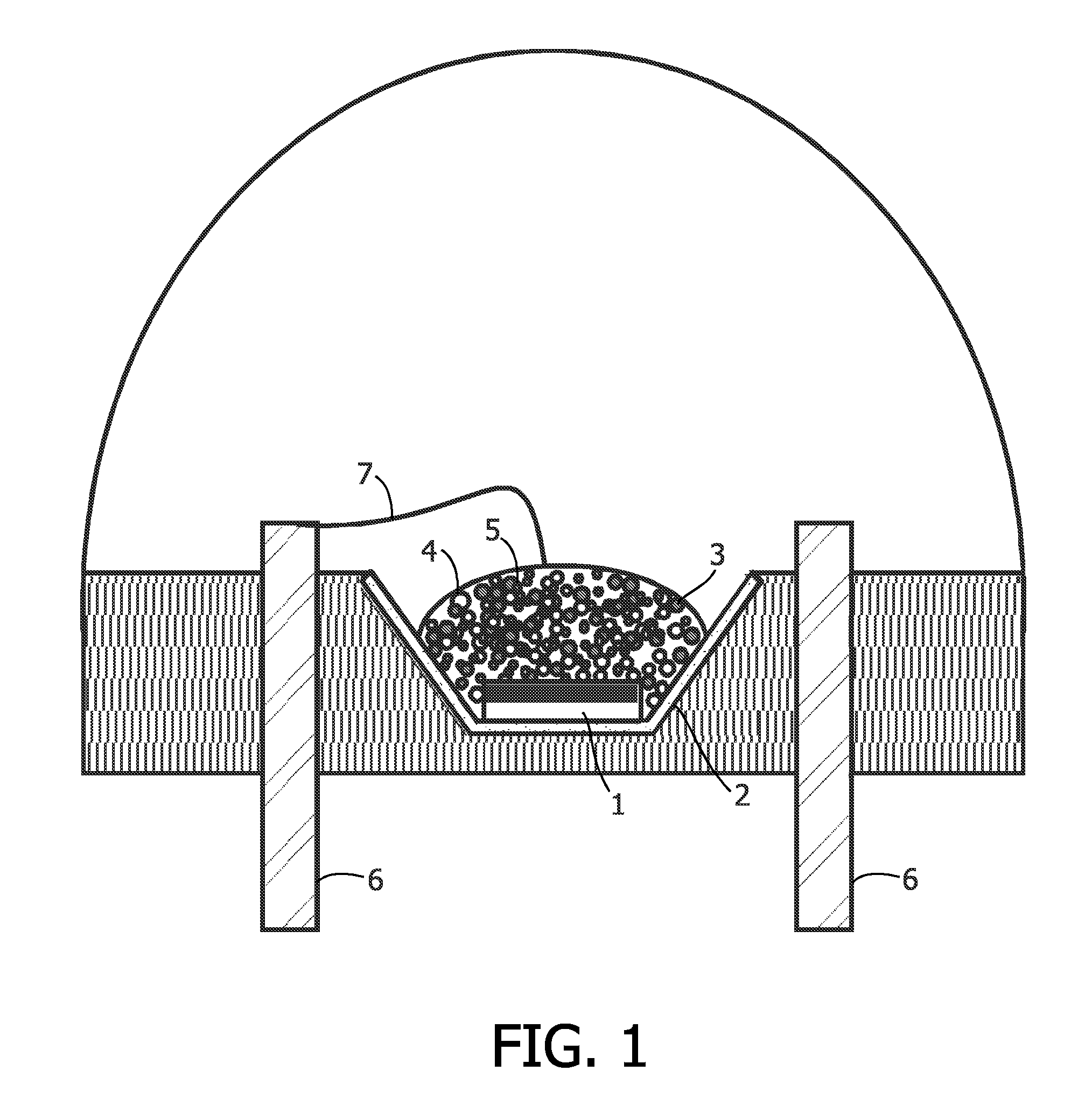Illumination System Comprising Color Deficiency Compensating Luminescent Material
a luminescent material and color deficiency technology, applied in the direction of discharge tube/lamp details, discharge tube luminescnet screens, lighting and heating apparatus, etc., can solve the problem of unnatural pinkish light, limitation of such phosphor-convertible light-emitting devices, and inability to generate white light of the desired tone, etc. problem, to achieve the effect of improving color rendering and low color temperatur
- Summary
- Abstract
- Description
- Claims
- Application Information
AI Technical Summary
Benefits of technology
Problems solved by technology
Method used
Image
Examples
specific embodiments
[0073]1. White LED Comprising YAG:2% Ce and YAG:1% Pr
[0074]A phosphor blend of 70 to 80% YAG:2% Ce and 20 to 30% YAG: 1% Pr was suspended in a silicone precursor, a polymerization catalyst was added, and a droplet of this suspension was deposited onto the LED die, based on a 460 nm emitting InGaN. A plastic cap sealed the LED and the silicone was polymerized within about an hour. The spectra of LEDs with three different coating thicknesses are depicted in FIG. 3.
[0075]2. White LED Comprising (Y,Gd)AG:2% Ce and (Y,Gd)AG:1% Pr
[0076]A phosphor blend of 70 to 80% (Y,Gd)AG:2% Ce and 20 to 30% (Y,Gd)AG:1% Pr was suspended in a silicone precursor, a polymerization catalyst was added, and a droplet of this suspension was deposited onto the LED die, based on a 460 nm emitting InGaN. A plastic cap sealed the LED and the silicone was polymerized within about an hour. The spectra of LEDs with two different coating thicknesses are depicted in FIG. 4.
[0077]According to a further aspect of the inv...
PUM
 Login to View More
Login to View More Abstract
Description
Claims
Application Information
 Login to View More
Login to View More - R&D
- Intellectual Property
- Life Sciences
- Materials
- Tech Scout
- Unparalleled Data Quality
- Higher Quality Content
- 60% Fewer Hallucinations
Browse by: Latest US Patents, China's latest patents, Technical Efficacy Thesaurus, Application Domain, Technology Topic, Popular Technical Reports.
© 2025 PatSnap. All rights reserved.Legal|Privacy policy|Modern Slavery Act Transparency Statement|Sitemap|About US| Contact US: help@patsnap.com



